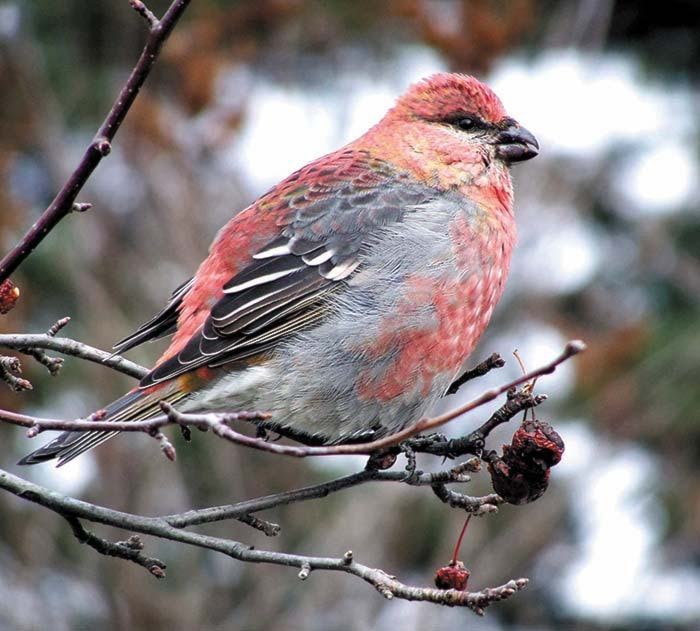Daryl Calder
On Saturday, Dec. 20, many birders, young and old, will spend the day outdoors searching for wild birds in the Cranbrook area.
We will meet at the West entrance visitor area beside Elizabeth Lake at 8:45, form groups and cover as much area as possible within our count area quadrants. Four-door vehicles with clean windows are best, to move each team safely and efficiently. Whenever it is safe to pull over to the side of the road, we hop out quietly, listening and looking. Sometimes, one or more team members will walk ahead across a field or along a path, to be picked up a few minutes later.
Our day promises to be mild, calm and dry.
Thinking back to previous counts, conditions which are uncomfortable for humans are not necessarily bad for birds. Fogged windows are a nuisance to us, but strong, warm winds cause birds to disappear as they seek shelter.
The experienced team members will be checking all the "hot spots" they can think of. Patches of open water, grasslands, forest edges, bird feeders and the shopping cart corrals at Superstore are sure to produce.
If a particular group was well organized and adventurous, a traverse of the Community Forest, or other longer distance on foot would likely yield useful results.
Last Sunday, I was fortunate to join the gang from the Elk Valley and Crowsnest Pass for the Fernie CBC. Birding was good for us and the birds. However, because there was so much open water in the Elk River, the river ducks were not concentrated in their usual hot spots.
On a quiet back road, with the window rolled down, I stopped whenever chickadees were heard. This is a good strategy because other quieter birds form mixed flocks with the noisy chickadees. Not only that, all four types of chickadees may be observed. In one way, noisy, heavy trains were annoying. But, by focussing the binoculars at an oncoming train in the distance, I was fortunate to record several species as they were flushed from thickets and ditches.
Fernie birders were relieved that many of the winter finches have returned following their dramatic disappearance last year. One of the larger members of it's family, the Pine Grosbeak is a bird of the boreal forests. A large, unwary finch, it makes periodic winter irruptions into southern Canada and northern US. It is the largest and rarest of the 'winter finches'. With his pinkish-red head, breast, back and rump, the male is a handsome fellow, while the golden yellow of the female also adds a splash of colour to a winter scene.
The tameness and slow-moving behaviour of the Pine Grosbeak gave rise to the local name 'mope' in Newfoundland. Winter flocks may stay near a tree with abundant fruit until all of it is consumed. A breeding adult bird develops pouches in the floor of it's mouth for carrying food to it's young. During most of the year, 99 per cent of it's diet is vegetable matter, especially buds, seeds and fruits of spruce, pine, juniper, elm, maple, mountain ash, apple and crabapple. It feeds insects and spiders to it's young, though, often mixed with plant foods. It drinks water or eats snow daily. This finches' conservation status is largely unknown because of the difficulty when assessing populations. On Saturday, it will be a treat to observe these fine birds.
Birds we should see on count day near Cranbrook.
Loons, Grebes, Herons, Geese, Mallards, Goldeneye, Mergansers, Eagles, Hawks, Grouse, Killdeer, Snipe, Rock Doves, Owls, Kingfishers, Woodpeckers, Flickers, Jays, Nutcrackers, Magpies, Crows, Ravens, Chickadees, Nuthatches, Creepers, Wrens, Dippers, Kinglets, Solitaires, Robins, Waxwings, Shrikes, Starlings, Sparrows, Juncos, Blackbirds, Grosbeaks, Crossbills, Redpolls, Siskins.
For those birders who wish to participate as a feeder watcher, please contact me and submit your results after 5 PM. At that time, field birders will meet for a potluck and count up. Best of luck to everyone for a fine day.
Submitted by Daryl Calder, 250-489-1601 on behalf of Rocky Mountain Naturalists
